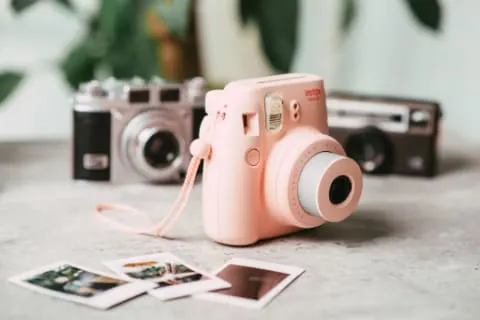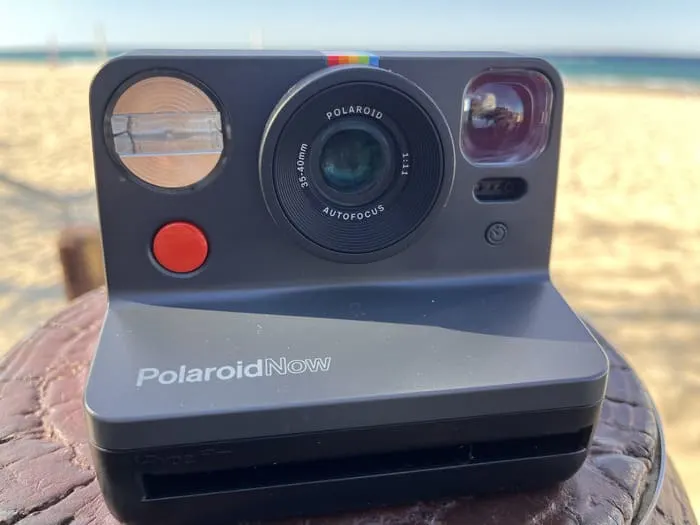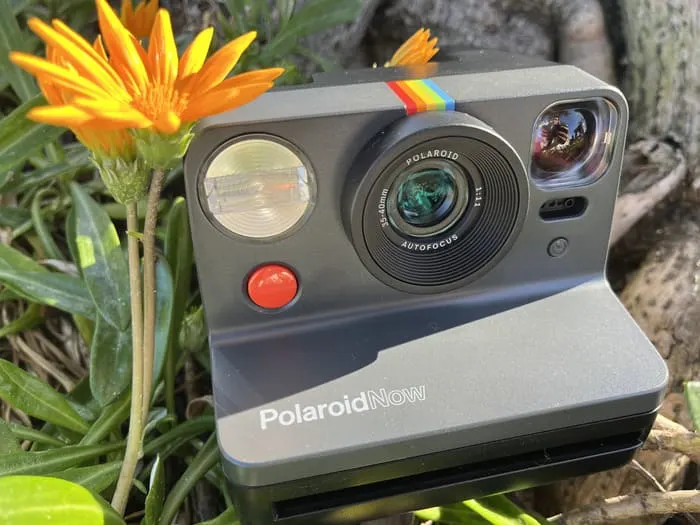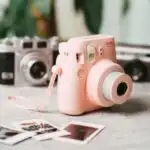Ugh, I remember the day when I took a picture with my cherished Polaroid camera. Excitedly waiting for the photo to develop, I saw a disheartening white rectangle! I couldn’t help but wonder, “Why are my Polaroids coming out white?“
You’re not alone in this frustrating experience if you’re going through this. As a fellow instant camera lover, I’ve been there and am here to help!

In this article, I’ll dive into the common causes of those pesky white Polaroids.
I’ll answer specific questions about camera models like the Instax Mini 11. Additionally, I’ll share my top tips to ensure your future shots turn out as perfect memories.
So, grab your Polaroid camera and join me on this journey. Let’s unravel the mystery of white Polaroids together and help you regain your confidence in capturing those precious moments!
3 Common Reasons for White Polaroid Photos

#1 Overexposure
One common reason for white Polaroids is overexposure due to accidentally covering the light and flash sensors with your fingers while taking a photo.
It’s an easy mistake, but it can cause the camera to misjudge the lighting conditions, resulting in an overexposed, white picture. Be mindful of your grip when snapping a picture!
Another cause of overexposure is taking photos in simply too bright environments, like under the harsh midday sun.
This can overwhelm the camera’s sensor, leading to washed-out, white images. Try seeking shade or waiting for a time of day with softer light to capture your memories.
#2 Film Exposure To Light
Carefully managing your film is crucial to avoid exposing it to light before it’s inside the camera. Even a brief exposure to sunlight can ruin the film, causing your photos to come out white.
Treat your film like a delicate treasure, and always load it into the camera as quickly and gently as possible.
Failing to close the door properly can also result in light leakage, exposing the film and leading to white Polaroids. Always double-check that the door is securely closed before taking photos.
It’s a simple step that can save you from the disappointment of a ruined shot!
#3 Camera Settings and Limitations
While most instant cameras have automatic exposure settings to help you capture well-lit photos, these settings may only sometimes produce the desired results.
It’s essential to familiarize yourself with your camera’s settings and be ready to make adjustments when needed.
Many cameras feature scene modes, like portrait or landscape, which can affect the exposure settings. Choosing the wrong mode may result in white Polaroids, so select the appropriate mode for your subject.
Finally, it’s worth noting that some subjects are too bright for instant cameras to capture accurately.
In these cases, it’s best to wait for a different time of day or adjust your composition to avoid capturing overly bright subjects. Remember, patience is vital in photography – sometimes, waiting for the perfect light can make all the difference!
4 Awesome Tips for Preventing White Polaroid Photos 🙂

If you’re still encountering white Polaroid picture issues, then try these awesome tips to help fix the problem:
#1 Proper Handling of Film and Camera
We all want to avoid white Polaroid photos. One key aspect is to treat your film and camera with extra care. Keep your film snuggled in its packaging until the big moment comes to load it into your camera, and keep it away from light sources. When you’re ready to load the film, double-check that the camera door is closed tight to prevent any sneaky light from getting in.
#2 Mindful Positioning of Fingers When Shooting
Now, let’s talk about our fingers! It’s easy to accidentally cover the camera’s light and flash sensors while we’re snapping away, leading to overexposure and white photos. Find a comfy grip that keeps your fingers clear of the sensors, and you’ll be on your way to better-exposed shots.
#3 Adjusting to Different Lighting Conditions
Lighting can be tricky, but we can learn to work with it! Avoid shooting in harsh sunlight or super bright environments when you’re out and about. Instead, look for softer light, like overcast days or the magical golden hour. For indoor photography, ensure you have enough light to expose your photos correctly without overdoing it.
#4 Utilizing Camera Settings Effectively
Lastly, let’s get friendly with our camera’s settings! Knowing your camera’s automatic exposure mode, scene modes, and any manual settings, you’ll be well-equipped to handle any lighting situation. Watch your Polaroid photos go from white to wow to understand these settings!
White Polaroid FAQs
Why Are My Polaroids Coming Out White?

Polaroids often appear white due to overexposure, improper film handling, or challenging lighting conditions. Overexposure can result from covering your camera’s light and flash sensors, taking photos in excessively bright environments, or incorrect camera settings.
By paying attention to these factors and adjusting your technique, you can significantly improve the quality of your Polaroid photos.
Why Are My Polaroids Coming Out White Instax Mini 11?

Instax Mini 11 photos may come out white for similar reasons as other Polaroids, including overexposure, improper film handling, or challenging lighting conditions. Ensure you don’t cover the camera’s sensors, handle the film carefully by avoiding exposure to light before loading it, and pay attention to the lighting when capturing images. The Instax Mini 11 has an automatic exposure mode, so be mindful of the camera’s sensors and settings to avoid white photos.
Why Does My Polaroid Come Out White?

Your Polaroid may come out white if the photo is overexposed, resulting from covering the camera’s sensors, taking pictures in excessively bright environments, or mishandling the film during loading.
Additionally, using incorrect camera settings or shooting a subject that is too bright can contribute to this issue. By addressing these factors, being mindful of your camera’s settings, and choosing appropriate subjects, you can avoid white Polaroid photos and improve the overall quality of your images.
Can I Fix A White Polaroid Photo?

Unfortunately, once a Polaroid photo turns out white, it’s nearly impossible to salvage the image. The chemical process that occurs within the film during development is irreversible. It’s best to focus on preventing white photos in the future by following the tips and advice mentioned in this article.
Can Instant Cameras Handle Indoor Photography Without Overexposing Photos?

Yes, instant cameras can handle indoor photography without overexposing photos, as long as you pay attention to lighting conditions and camera settings. Ensure enough light in the room to capture a well-exposed image, but avoid overly bright or direct light sources. Utilize your camera’s settings, such as the automatic exposure mode or scene modes, to adjust to the specific indoor environment you’re shooting in.
Recap Of The Main Causes of White Polaroid Photos (And How To Avoid Them)
Well, there you have it! I’ve explored why Polaroids come out white and shared valuable tips to help you avoid this issue. Let’s quickly recap what we’ve learned:
- Overexposure can be caused by light and flash sensor coverage or excessively bright environments
- Film exposure to light can result from improper film handling or not closing the camera door properly
- Camera settings and limitations may contribute to white photos
To wrap up, I encourage you to keep these points in mind as you continue your instant photography journey:
- Properly handle your film and camera
- Be mindful of your finger placement when shooting
- Adjust to different lighting conditions
- Utilize your camera settings effectively
I hope this guide inspires you to get out there and create some fantastic Polaroid memories. I can’t wait to see the stunning photos you’ll capture.
Read next: Polaroid Now vs Instax Mini 11: Battle of Instant Cameras!